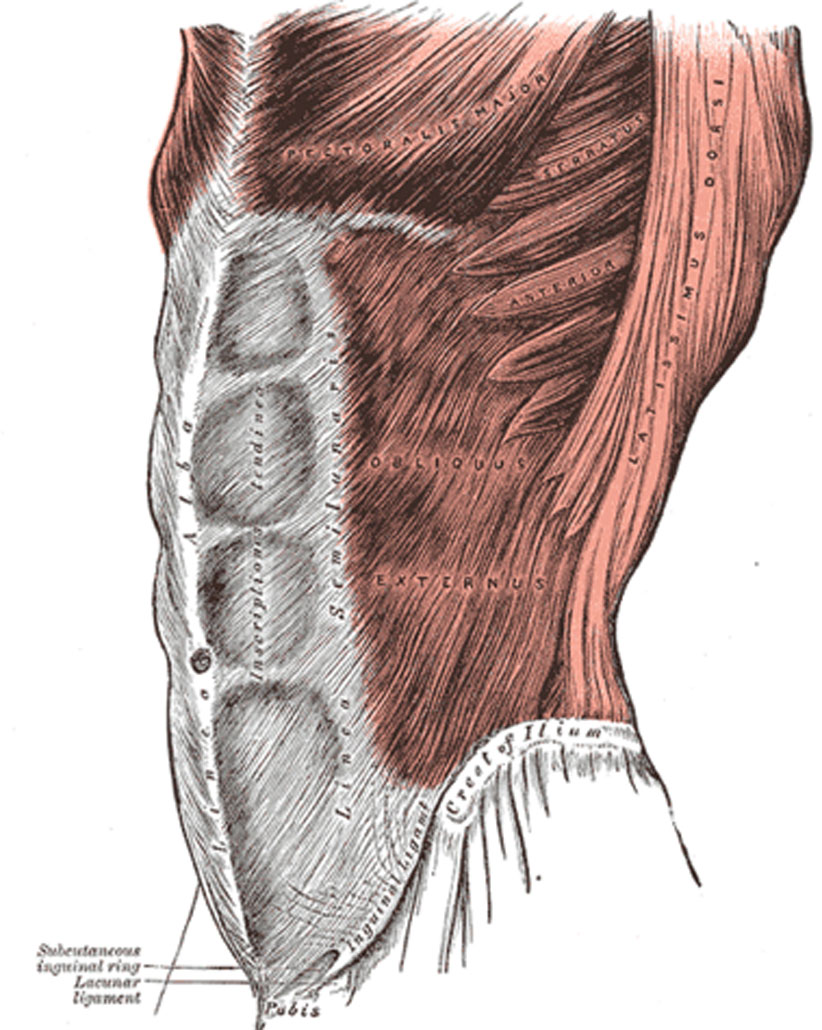
Our collective six-pack obsession is in full swing. Developing a six-pack tops the list for many well-intended yogis and fitness enthusiasts trying to figure out how to tame the bulge. With a smorgasbord of “magic bullet” recipes for rock hard abs, trying to figure out the truth of core strength can leave one perplexed, without results, or even worse—with an imbalance resulting in a global deficit that expands much greater than the core. Regardless, I think you should brace yourself (pun intended) for what I am about to share as it will change your outlook on your core and transform your “ab-pearance.”

Since the core consists of more than just the muscles that form the desired “washboard abs” that are reflected in the mirror, it’s critical to acknowledge what the core unit truly is. While what you see does play a key role in our core strength, integrity of the core comes from optimizing global muscle activation and coordination around the entirety of the spine. Thus, learning to engage the entirety of the tubular core is ideal for maximizing spinal stability.
The activation of the Tubular Core encourages a muscular orchestra, rather than a solo contributor experience, that when done properly, can be both felt internally and palpated externally. When engaged, it feels as though the whole torso is securely bubble wrapped from throat to pelvic floor without strain or stress. The synergy that occurs during tubular core activation is the same coordination of muscular effort one instinctively does when bracing for impact, when lifting heavy objects, and literally during any activity that requires spinal stabilization.
This secure “life-vest” sensation occurs due to the rise in inter-abdominal pressure during abdominal bracing, which is a very good thing for the spine. Within this perspective, the muscles of respiration, the serratus group, the deep spinal muscles and the famous abdominal muscles must learn how to communicate and collectively work together without deficit to increase stiffness of the torso and stabilize the spine.
If just one piece of the core unit shows a lack of participation, abnormal patterns and pain may appear in other regions of the body. For example, the authors of study published in the journal Clinics stated that in people with low back pain, the transverse abdominus (TrA) is recruited later, which led to speculation that this abnormal pattern was related to an unstable or unhealthy spine.
Now that you know how this concept influences your body, it’s time to serenade the spine and awaken the Tubular Core orchestra or, the or-CORE-estra. Before we begin, shift your perspective from trying to put your body into position to achieve a pose to that of “every pose is an assessment.” Turn on your inner ear and listen to what your tissues are telling you…so you can discover out of the muscle groups, who is participating and who is not.

How to activate your tubular core:
1. Inhale into the abdomen and inflate all of the abdominal contents as if this area were an inner tube.
2. Retain the inhalation and hold the breath.
3. While maintaining the held breath, simultaneously draw the puffed belly inner tube towards the spine from all conceivable angles. It’s as though you are bracing for impact to the gut without exhaling.
4. Quickly palpate your Tubular Core: The entire core including the sides of the waist, lower back and intercostals should all be firm.
5. Exhale
6. Repeat steps 1-5 until the core’s orchestra is all in the same key during step 4, meaning that the all of the tissues feel evenly firm.
7. Then put your core’s orchestra to the test by attempting to recreate the sensation of Tubular Core without holding the breath.
If you’re looking to challenge yourself and add precision to the activation of your Tubular Core, initiate this using an abdominal thoracic breath (as demonstrated in the video below) in step 1, then proceed through step 7. In this variation, step 3 may feel as though you are attempting to cough without actually coughing.
Now that you have a harmonious or-CORE-estra, you are ready to take your abdominal work, inversions, and heavy lifting to the next level. With mindfulness, you can begin to detect traces of Tubular Core activation during daily respiration, elimination, and (should you have to) expulsion of abdominal contents. Activation may even appear during everyday tasks from dressing to doing dishes. With proper awareness and training – which includes taking a deeper dive into understanding the interconnectedness of your diaphragm with the Tubular Core – you will be amazed at how often your Tubular Core can be utilized throughout the day to help improve core-dination, posture, and strength.
Baylea Protine is a Certified Yoga Tune Up Teacher, 200-hr RYT and a Certified Occupational Therapist Assistant. Her teaching style is nurturing yet playful with a focus on mindful movement. Her classes are inspired by her own self inquiry and fascination with the human body and its resilient host, the individual. With a trained eye in movement patterns and applicable therapeutic interventions, Baylea’s intention is to awaken individuals to the reality of functional and sustainable movement as a foundation to overall health and well-being. It is Baylea’s belief that your yoga practice, sport or fitness regimen should enhance your quality of life long after you’ve stepped off the mat or left the gym; therefore, setting a standard for quality movement and biomechanics is of upmost importance. Along with being a Yoga Tune Up Level 1 Practitioner, Baylea holds current certifications in Original Strength, and Clubbell Yoga by RMAX International. www.yogatuneup.com/teacher/baylea-protine
